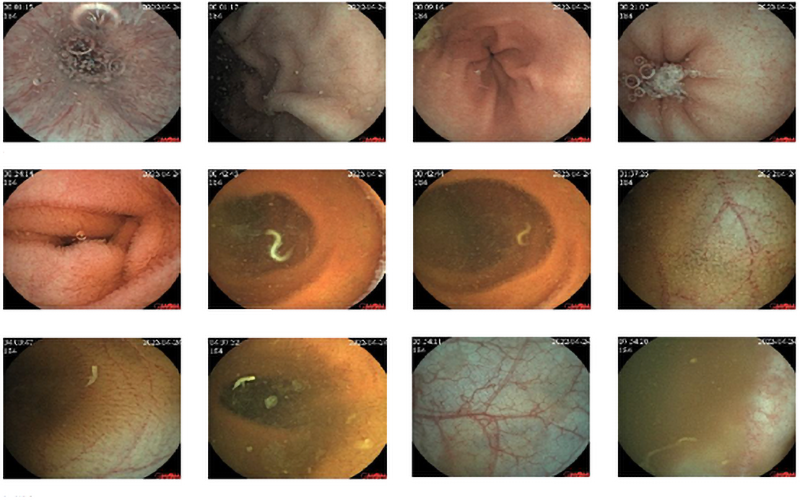GI Blog
Childhood complaints of abdominal pain may not always ring alarm bells for parents. Often brushed off and attributed to fleeting causes, these discomforts can become a persistent issue. At the Digestive Department of Beijing Children's Hospital, affiliated with Capital Medical University, Professor Zhang Jing encountered a young boy named Li Rui. Eight-year-old Li Rui had been intermittently suffering from abdominal pain for three years, but it wasn't until the pain intensified in the past month that he was brought to the hospital for consultation.
"Abdominal pain in children can have various underlying causes," explained Professor Zhang Jing. "These include visceral pain, referred pain from external sources, conditions like shingles, and even poisoning." Upon examination, she noticed that the child exhibited rapid breathing and fatigue. Further inquiry revealed that the abdominal discomfort often occurred after meals.
Li Rui's parents expressed concerns about traditional endoscopy procedures, worrying that the child might feel uncomfortable and move around, thus compromising the effectiveness of the examination. Opting for anesthesia-assisted endoscopy would involve a long wait. With Li Rui's condition worsening, waiting was not an option. They were eager to identify the cause promptly and begin treatment. Professor Zhang Jing's expertise led her to recommend the OMOM Robotic Capsule Endoscopy System(OMOM RC), developed by JINSHAN, for a comprehensive gastroenterological examination. This capsule could simultaneously examine the stomach, and intestines, providing a simple and efficient solution.
After a discussion with Li Rui's parents, Professor Zhang Jing decided to utilize the OMOM Robotic Capsule Endoscopy System, developed by Jinshan Technology, for a comprehensive gastroenterological examination. This capsule could simultaneously examine the esophagus, stomach, and intestines, providing a convenient and efficient solution.
The capsule successfully completed its mission, functioning within the body for a total of 11 hours, 7 minutes, and 32 seconds. The capsule reached the stomach within 3 seconds of ingestion, entered the duodenum after 21 minutes and 15 seconds, and navigated through the ileocecal valve to the colon in 5 hours, 20 minutes, and 40 seconds.

The capsule's journey revealed a smooth esophageal mucosa, clear passage, and successful entry into the stomach. The gastric antrum displayed rough mucosa, congestion, and edema, accompanied by scattered red spots, while the pylorus appeared normal. Advancing to the duodenum, the mucosa appeared intact, without evident erosion or ulcers. The small intestine displayed healthy mucosa with no significant swelling of villi. Several suspicious white, elongated bodies were observed within the small intestine. The small intestine fluid displayed a normal color, devoid of dark red or black substances. Moving to the ileum, the mucosa exhibited slight roughness, scattered red spots, and minimal lymphoid follicle hyperplasia. The presence of fecal material and residue hindered observation within the colon, but localized mucosa appeared slightly rough, with red spots and a clear vascular network. Suspicious white bodies were also discernible.
"Through capsule endoscopy, we were able to diagnose the child with chronic superficial gastritis, along with parasitic infestations in both the small intestine and colon," explained Professor Zhang Jing. Following the diagnosis, Li Rui underwent targeted treatment. Upon follow-up, the child's abdominal pain had vanished, and he exhibited improved spirit and energy.
"Having suffered for three years, we had been at a loss for an explanation," Li Rui's father remarked. "Thanks to this innovative technology, we are no longer in the dark."
Professor Zhang Jing emphasized the impressive capabilities of China's domestically produced capsule endoscopy products, including JINSHAN’s array of capsule technologies. These capsules not only facilitate examination of the esophagus and stomach but also overcome the limitations of small intestine examination. Each patient receives a personalized capsule, eliminating the risk of cross-infection. The procedure is painless, non-invasive, and doesn't require anesthesia. Capsule endoscopy enables prolonged and comprehensive observation of the entire digestive tract, making it particularly suitable for diagnosing children with unexplained abdominal pain, diarrhea, gastrointestinal bleeding of unknown origin, and zinc-deficiency anemia. Moreover, children exhibit excellent compliance, rendering capsule endoscopy an optimal choice for pediatric gastrointestinal investigations.
The successful diagnosis and treatment of Li Rui's case exemplify the transformative potential of OMOM Robotic Capsule Endoscopy and its ability to uncover hidden health issues in children. As we continue to advance medical technology, these innovative solutions promise brighter prospects for the field of pediatric gastroenterology.